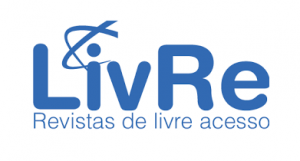Conflict of Interest Policy
There is a conflict of interest (CI) when there is a divergence between an individual's private interests (competing interests) and their scientific and publishing responsibilities, such that a reasonable observer may wonder if the individual's behavior or judgment was motivated. objective considerations or competing interests.
- Types of competing interests
1- Financial Ties: This conflict is present when a participant in the publishing process has received or expects to receive money (or other financial benefits, such as patents or actions), or gifts, or services that may influence work related to a particular publication.
2- Academic Commitments: Participants in the publishing process may have strong beliefs ("intellectual passion") that bind them to a particular explanation, method or idea. They may, as a result, be biased in conducting research that tests commitment or in reviewing works by other authors who are in favor or at odds with their beliefs.
3- Personal Relationships: Personal relationships with family, friends, enemies, competitors or colleagues may represent Conflict of Interest. For example, a user may have difficulty providing an unbiased review of articles by researchers who were coworkers.
4. Political or Religious Beliefs: Strong commitment to a particular political vision (eg, political position, agenda, or affiliation) or having a strong religious conviction may represent a Conflict of Interest for a particular publication, if these political or religious issues are stated or denied in the publication.
5. Institutional Affiliations: Conflict of Interest exists when a participant in the publication process is directly associated with an institution and may bias his or her assessment in order to gain a possible position or interest in a publication.
- Declaration and management of conflict of interest
Conflicts of Interest are ubiquitous and cannot be completely eliminated from the editorial and / or authoring process. However, they can be constructively managed to exert the least possible intrusion into the magazine, its content and its credibility.
All statements about the author's Conflict of Interest are requested in writing - in the editor's remarks field - as a condition for reviewing a manuscript, so that authors are likely to report potential conflicts of interest related to the manuscript. , if there is.
- The Consequences of Not Declaring Possible Conflicts of Interest
Any conflict of interest will be dealt with based on flow charts used by the Committee on Publication Ethics (COPE). Graphics can be downloaded and accessed from the link (http://publicationethics.org/resources/flowcharts).
- Conflicts of Interest results in a manuscript no longer being considered for publication?
If any or all of the Conflict of Interest (mentioned above) are detected (a priori during the peer review process or post-publication) in any evaluated or approved text, the manuscript will be suspended until the conflict of interest interest is resolved.
- Participant Responsibilities
Authors: All authors must report any Conflict of Interest related to their research to the publisher.
Reviewers: All contributors must report any Conflict of Interest related to their review tasks to the editor.
Editors: Editors should not make any editorial decisions or be involved in the editorial process if they or a close family member have a Conflict of Interest (financial or otherwise) in a particular manuscript submitted to the journal.


